André Citroën Park, Paris, France by Gilles Clément and Alain Provost. The modern Parisian park André Citroën, located in the 15th arrondissement on the left bank of the river Seine, has been for the past two decades an attractive space of interaction for the city’s residents, a hot spot for tourists, and an influential object of study for both landscape architecture and architecture students. But let’s not get hasty and call it a success, for it has been also criticized by many and even labeled by some as one of the worst parks in Paris. So does that make it a failure? In the following article, we look at the different aspects of the park with the intention of producing an insight rather than drawing sharp judgments on its extent of failure or success.
André Citroën Park and the War
The neighborhood of the park is known as Quartier de Javel or the Javel neighborhood. It was named after a factory, set up in 1777 by the Count Artois, that produced the disinfectant water known until today as eau de Javel (Javel water). The district maintained its industrial heritage with the opening of a weapon factory by André Citroën during World War I in 1915.
After the war, the factory was converted into the industry of the well-known car Citroën. The factory remained open until 1974 and was later moved to a new location, leaving behind an unused plot of land on the riverbank. The park, located on the old premises of the Citroën factory, was created in 1992 by landscape architects Gilles Clément and Alain Provost and architects Patrick Berger, Jean-François Jodry, and Jean-Paul Viguier. It is considered one of the largest parks in Paris to open in the 20th century. A Vast Array of Attractions The design of the park comprises a set of opposites that indeed attract. An encounter of intimacy and openness is present in this park that can be divided into three main parts: two separate gardens, called The White Garden and The Black Garden; a large central park; and a series of small gardens known as The Jardins Sériels or the serial gardens.The Hot Air Balloon at The André Citroën Park
Be prepared to get lost in space, as the play on levels offers the park’s wanderers an opportunity to explore the site through walkways and bridges that connect the different areas. Lookout spots are also present, as well as a hot air balloon that allows for an aerial view of the park, the Seine, and surrounding urbanscape.
The Open Space A large lawn area occupies the center of the park, where individuals and families stroll, play, and enjoy picnics on the rare sunny days in Paris. A series of Cypresses and two large glasshouses frame the park and surround the large paved area facing the lawn, as well as the water games located between the glasshouses. The latter contain a variety of Mediterranean plants and trees. In the middle of the lawn area stands the large hot air balloon that can hold about 30 adults and 60 children, going up as high as 150 meters.
Wide view of the André Citroën Parc’s esplanade in summer, with its lawn, the diagonal footpath, its fountains and its emblematic greenhouses. Credit: Thomas Lottmann , CC 3.0
- Community Turn Abandoned Industrial Site into Public Park
- An Underground Park – The Lowline Park
- $3 Million Investment in Urban Park Breathes Life into Dying Downtown
The Gardens Perhaps the most unique part of the park lies in its gardens, which are at once educational and entertaining. The White Garden, being the only part of the park where dogs are welcome and containing a playground, serves as the fun area and is a favorite of families and children. The Black Garden is a quiet area for reading and strolling, enhanced with dark foliage. The Changing Garden contains a wide variety of plants that, as its name suggests, allows for a change in the colors of this section according to the seasons. The Garden of Movement permits flexibility, as plants have no specific theme and grow untamed. The Serial Gardens are each represented by their vegetation of a different color, expressing a metal, a planet, a day of the week, a water state, and a sense.
Each garden is accompanied by a tactile sign that lists the vegetation.- The Blue Garden (Salvia superba, Veronica gentianoides etc.): Copper, Venus, Friday, rain and smell.
- The Green Garden (Acanthus mollis, Miscanthus sinensis etc.): Tin, Jupiter, Thursday, water spring and hearing.
- The Orange Garden (Azalea ‘flame’, Parrotia persica etc.): Mercury, Mercury, Wednesday, stream and touch.
- The Red Garden (Sambucus nigra, Taxus baccata etc.): Iron, Mars, Tuesday, cascade and taste.
- The Silver Garden (Olea europea, Lobularia maritime etc.): Silver, Moon, Monday, river and sight.
- The Golden Garden (Rosa ‘golden wings’, Sambucus racemosa ‘sutherland gold’ etc.): Gold, Sun, Sunday, evaporation and the sixth sense.
The Shortcomings of The André Citroën Park
Despite the impressive design lines and innovative features, the park does have several defects. It is first of all a real pity that while the park is advertised as being the only open park on the Seine, it does not really establish any connection with the river, as there is a gate and a wide unused space between both, losing a great potential.
“Look but don’t touch” The gates surrounding the park not only separate it from the river, but also from any interaction with its neighborhood. The park has been also criticized for inciting its users with a “look but don’t touch message” due to the lack of seating areas in some of the gardens and the absence of any picnic tables in the lawn area. Also, signs such as the one next to the water games warns children against playing there, but does not necessarily stop them. The park moreover closes as soon as it gets dark, and it would be rather more interesting to create proper lighting for the park and keep it open at night. André Citroën is definitely not your average, typical space. And the fact that it is visited by many means that something has been done right. Yet considering the large amount of money being spent on that park, it is definitely worth taking a second look at its weaknesses and turning it into an even more vibrant space. Recommended Reading:- Public Parks: The Key to Livable Communities by Alexander Garvin
- Urban Green: Innovative Parks for Resurgent Cities by Peter Harnik
Article by Dalia Zein Return to Homepage
Published in Blog









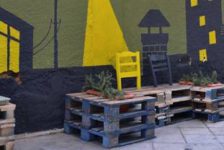
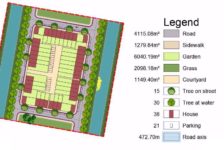
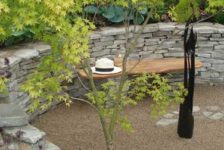
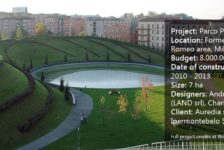

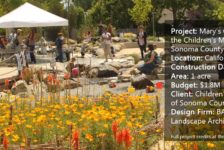

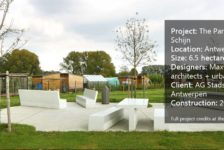
Pingback: Citroen Park, Paris(1992) – Urban Design History & Theory